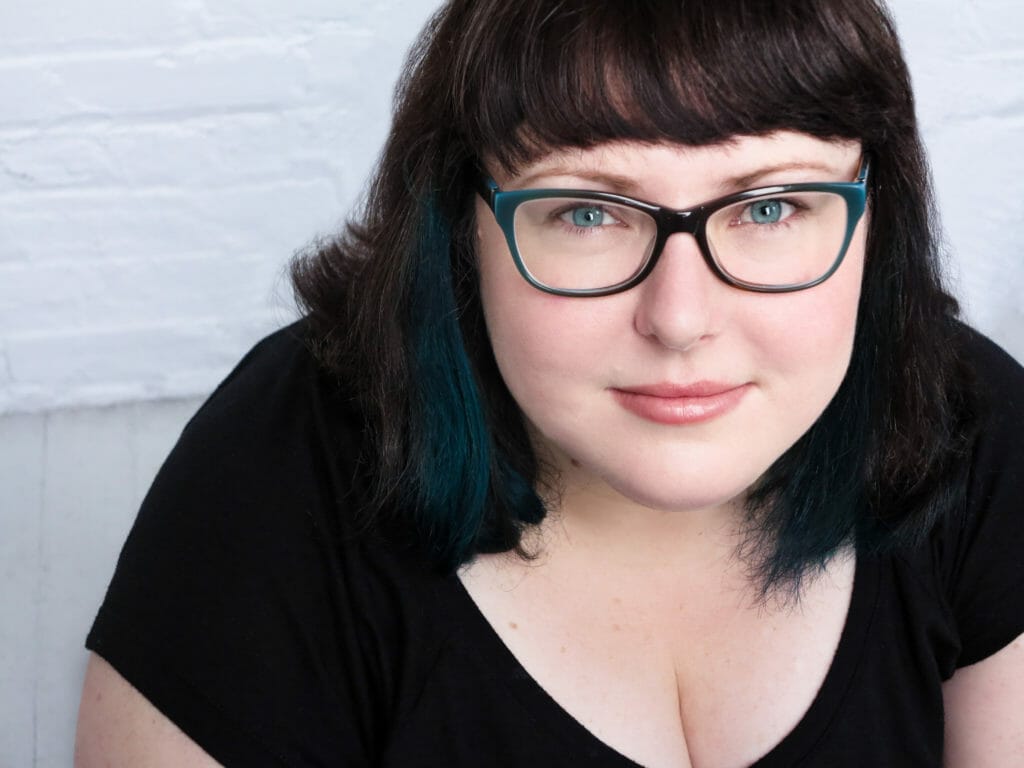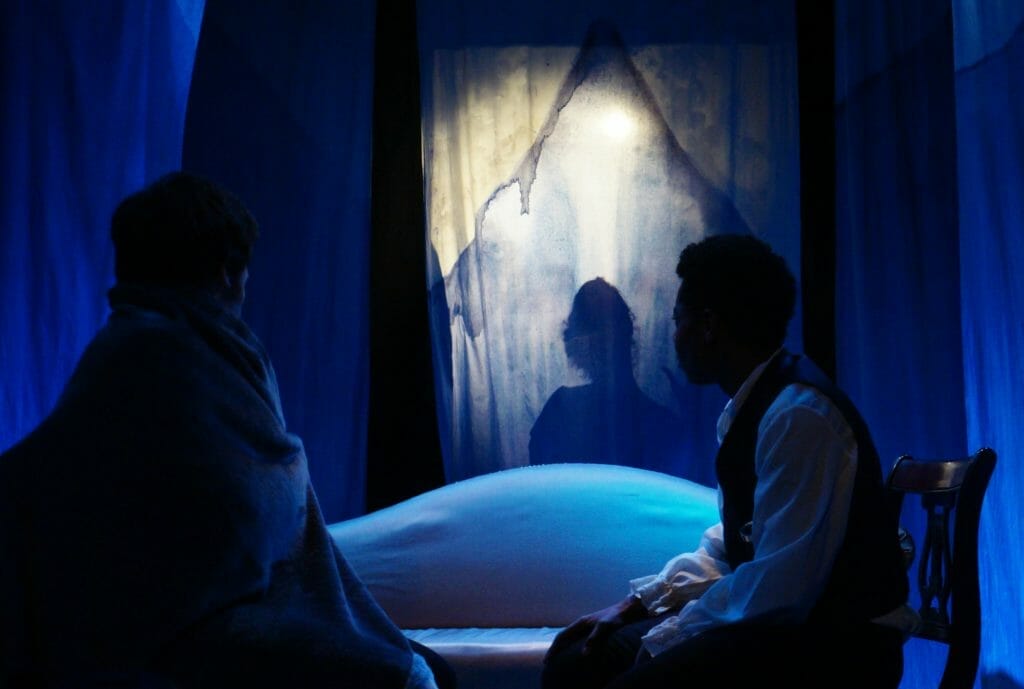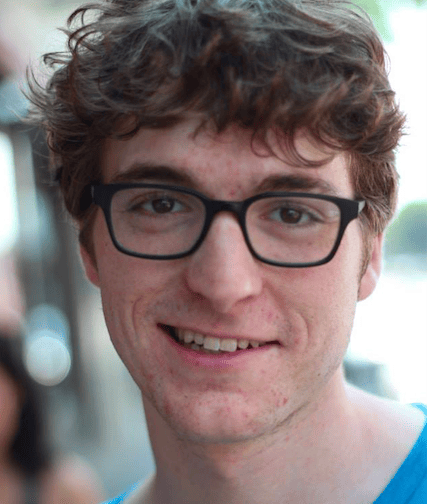To learn more about the creation of this new adaptation of Frankenstein and the newly-formed Bower Theatre Ensemble, Picture This Post interviewed Frankenstein director and Bower Theatre Ensemble Artistic Director, Bec Willett.
Picture This Post: Where did the idea for Bower come from?
I’ve freelanced as a theatre artist in Chicago for the last five years and worked in different roles in different companies – Marketing Director, Props Designer, Director, Scenic Designer, and general dogsbody and have seen the inner workings of how many of these companies are structured. It always seemed odd to me that often, despite the introduction primarily being an artistic one, people who became company members were asked to primarily take on administrative or business roles. This was usually accompanied by an implication that performing these tasks would earn you the opportunity to do more art, which of course rarely eventuated.
Inspired by the structure of Ariane Mnouchkine’s Théâtre du Soleil and with a confidence in education from my experience as the head of a high school drama department (in Australia before I moved to the US) I decided I wanted to try a different approach. While I wasn’t keen on starting out in a commune as Théâtre du Soleil evolved from and I most definitely didn’t have the resources to buy an aeroplane hangar on the outskirts of Paris, I really loved how in Soleil the focus is on the ensemble, with people playing different roles, creating a community by sharing meals and life together. All of these experiences came together to form the idea of Bower: a place where artists commit for a year to multiple productions in which they take on different roles and learn from each other.
What made you choose the name?
The bower bird is a rather cheeky Australian bird that builds a nest in a particular shape – one that is reflected in our logo. It seduces its mate by diligently decorating its nest with the things it finds beautiful – shiny pieces of plastic, old coke cans, and colourful fruits and foliage. Even back to my days as a visual art major, I’ve always loved the idea of creating art from the unexpected: that the value we often assign something is not the same as its worth. To a bower bird, a fractured piece of blue plastic is not trash, but rather the perfect piece to make its nest an unexpected azure masterpiece. Even though some of the ensemble members have taken to lovingly calling us ‘trash birds’ accompanied by sassy squawking which wasn’t exactly what I initially imagined, it remains an apt analogy for what we’re trying to do.
What sets Bower apart from other companies in Chicago? What are your goals with Bower?
There are two aspects – one for the artists and one for the audience. For the artists, the ensemble structure allows people to learn, to try something they haven’t before, and to build a community. As each ensemble commits on a yearly basis, we hope to continue this further by creating mentorships with emeritus artists.
For the audiences, the goal is to produce work that asks questions, originates from diverse perspectives and styles, and embraces the theatricality of theatre. I think often we tend to forsake the throng of stylistic conventions that only theatre can offer us because we think people either won’t like it, or won’t get it, or it’s just too hard. By continuously using the same devices and conventions, and therefore often tending towards telling the same stories, it’s easy to let ourselves stagnate as theatre artists, and in turn let our audiences think theatre is boring and a less comfortable replacement for television rather than offering something alive and new.
How were rehearsals for your first production, Frankenstein?
As with any rehearsal process, whether it’s your show or someone else’s, there’s always new surprises and new challenges. While much of it worked well, there are still kinks to be ironed out, especially in our approach to developing new work. Our adaptation of Frankenstein is also a very technical play to perform and direct, which was a challenge, albeit one I enjoy.
How has your mission/strategy been working as implemented on Frankenstein? Have some things worked better than others? What are you learning from this first experience?
I’m learning so much in my first experience as both as an artist and a leader. As expected, there are things that work better than others. The most exciting is that the central premise of Bower, people taking on different roles, seems to be working successfully! People have been able to learn and apply new skill sets with the support of those with more experience. As with any new venture, communication and expectations are always the greatest challenges, so we’re still working on refining those. One thing I was surprised to learn was just how ingrained into artists the fear of rejection is, seemingly a product of a system where everyone is encouraged to stay in their box, and even more often encouraged to stay silent while inside it. It’s definitely a challenge within this context to build a community where respectful input and collaboration is encouraged and valued above hierarchy.

What were your goals in creating Frankenstein?
I think we often hear the story of Victor or a green monster which has very little to do with the story as written. Yet from the moment we thought about mounting this production, it immediately seemed so obvious to me that the creature should be a woman enacted by the same actor playing Mary. It seemed especially appropriate given that at the time of the story creation, she wasn’t yet Mary Shelley but rather Mary Godwin, who had run off with Percy Shelley at sixteen years old. Upon returning to London society unwed and pregnant she was motherless, disowned by her father, penniless, and would be forced to remain so unless she married. Her options were to either to seal the deal with Percy – just as the virginal, well-behaved Elizabeth in the story, or like the Creature – be an outcast, ostracised, and unloved. The parallel drawn with the Madonna-whore complex was a compelling one.
My goal wasn’t to bastardise or alter the content of the story but rather make a simple choice to allow an audience to re-examine their perspectives and assumptions. To pose the creature as a woman while linking her to Mary raises questions beyond those typically associated with the green monster and his bolts: What options did Mary actually have available to her? What labels are set by the patriarchal system to ascribe worth? Why do men like Victor loathe the patriarchal system they create and yet refuse to release their power?
In the end of the play (just as in history) Mary makes a choice (from the few available to her) – yet even so, her creature side lives on. Mary was a survivor despite her circumstances and even two hundred years later her story remains.
What do you hope audiences get from a Bower production that they wouldn't get elsewhere?
I hope that the community behind the work is a feeling that extends to the audience.
I hope that people are excited and engaged by the ideas, stories and execution of our productions. I hope that when people attend our productions they have a unique experience that they could not possibly have had anywhere else.
When:
Through March 31, 2018
Thursdays, Fridays, and Saturdays at 7:30pm
Sundays at 5pm
Where:
Heartland Studio
7016 North Glenwood
Chicago, IL
Tickets:
For more information on tickets, visit the Bower Theatre Ensemble website.
Read more about him and other Picture this Post writers on the Picture this Post Masthead.
Click here to read more Picture this Post articles by Brent Ervin-Eickhoff





